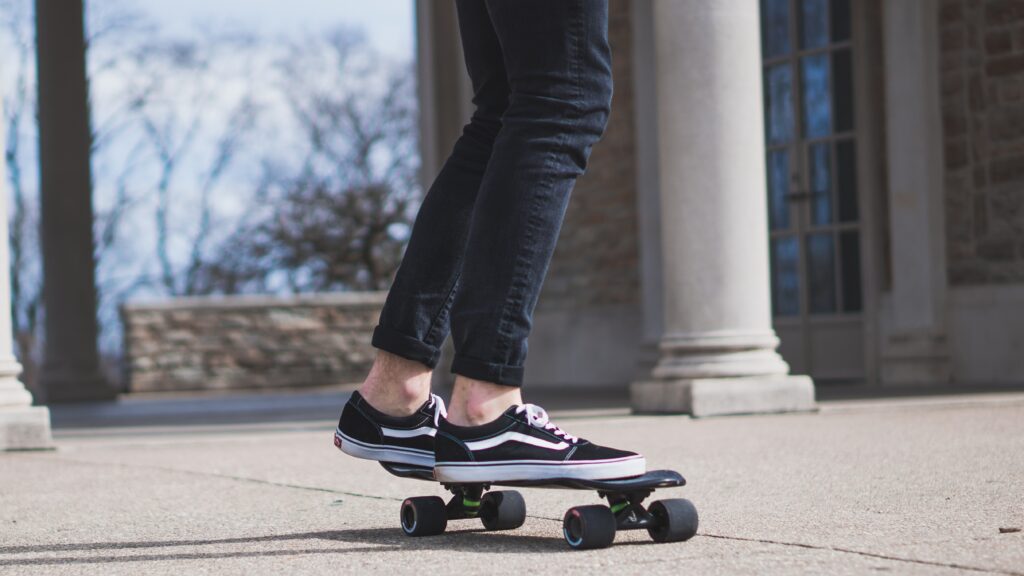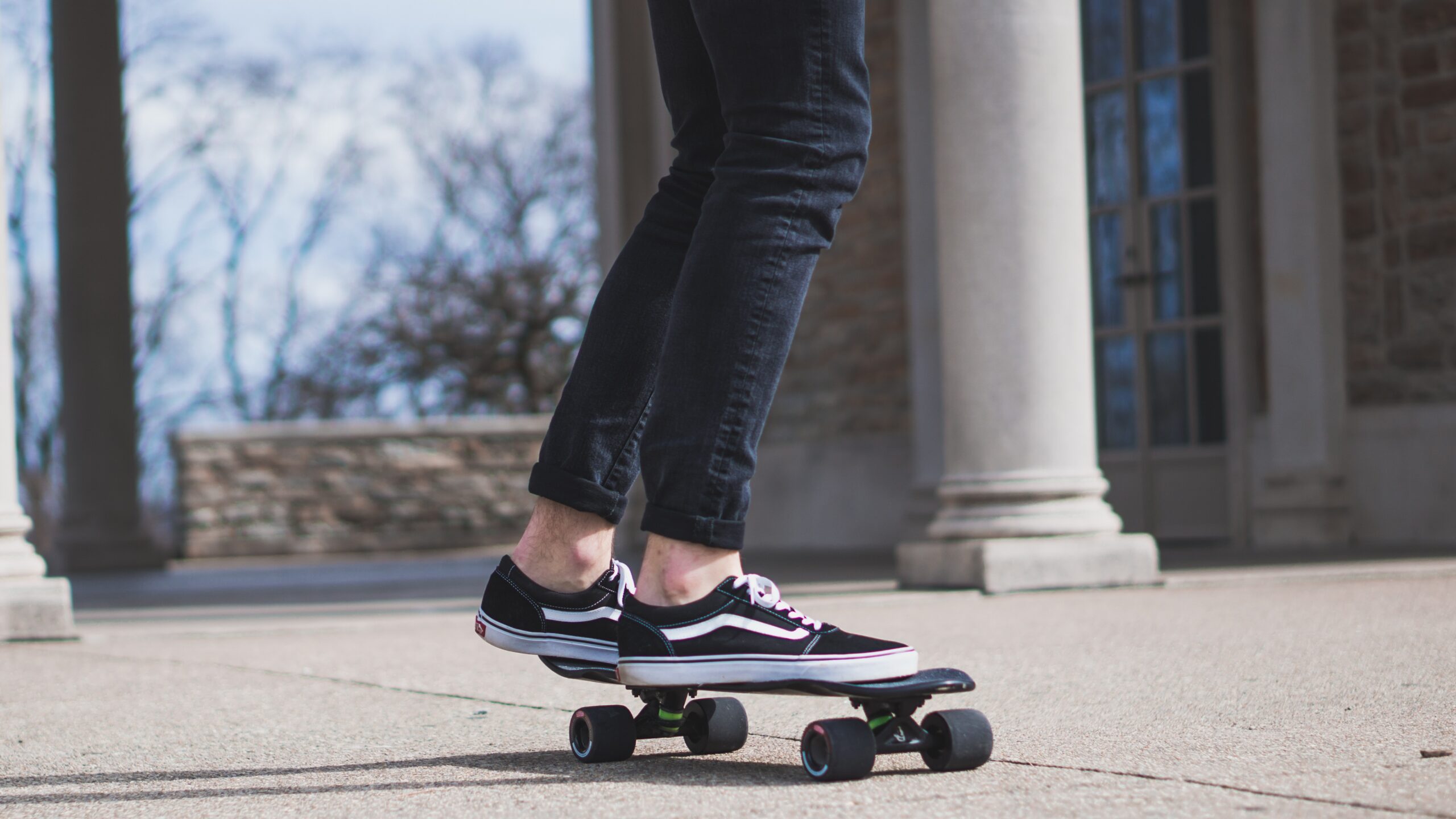Choosing the right skateboard wheels is essential for having an enjoyable and smooth ride. When it comes to considering the size and hardness of the wheels, there are a few key factors to keep in mind. The size of the wheels will determine the speed and stability of your skateboard, while the hardness will affect the grip and durability. By understanding these considerations, you can make an informed decision and enhance your skateboarding experience.

Size
Skateboard wheel size is important in determining the overall performance and maneuverability of your skateboard. When it comes to size, there are two key factors to consider: diameter and width.
Diameter
The diameter of a skateboard wheel refers to the distance across the wheel from edge to edge. It plays a crucial role in how the wheel interacts with the terrain. Smaller diameter wheels, typically ranging from 49mm to 54mm, are ideal for technical street skateboarding. They provide a lower center of gravity, which enhances stability and makes it easier to perform tricks. On the other hand, larger diameter wheels, usually ranging from 55mm to 60mm or even beyond, are better suited for cruising and downhill skateboarding. They offer a smoother ride over rough surfaces and allow for higher speeds.
Width
The width of a skateboard wheel refers to the surface area of the wheel that comes in contact with the ground. It affects the overall stability and maneuverability of your skateboard. Narrower wheels, typically ranging from 32mm to 35mm, are widely used for technical street skateboarding. They provide increased maneuverability, making it easier to navigate tight spaces and perform tricks requiring quick directional changes. Wider wheels, usually ranging from 35mm to 58mm, are more commonly used for cruising and downhill skateboarding. They offer increased stability, allowing for a smoother ride and better control at higher speeds.
Hardness
Skateboard wheel hardness is determined by the durometer rating and is a vital consideration when choosing wheels for your skateboard. It influences how the wheels grip the ground, affecting factors such as speed, control, and smoothness.
Durometer
Durometer is a measurement of the hardness of a skateboard wheel. It is denoted by a number followed by the letter “A,” such as 99A or 78A. The higher the number, the harder the wheel. Durometer ratings usually range from 78A to 101A, with 78A being the softest and 101A being the hardest. Softer wheels offer more grip and provide a smoother ride over rough terrain, but they can wear down faster. Harder wheels, on the other hand, offer less grip but are more durable and perform better on smooth surfaces.
A Scale
The A scale is the standard measurement used to determine the hardness of skateboard wheels. It categorizes wheels into different levels of hardness based on their durometer rating. Softer wheels, typically ranging from 78A to 87A, are classified as cruiser wheels, ideal for a smooth ride over rough terrain. Medium-hard wheels, ranging from 88A to 95A, are commonly used for street skateboarding and provide a good balance between grip and durability. Hard wheels, ranging from 96A and beyond, are usually used for technical tricks on smooth surfaces, as they offer less grip but more speed.
Size vs. Hardness
When choosing skateboard wheels, finding the right balance between size and hardness is essential. Both factors work in conjunction to provide the optimal performance for your skateboarding style and the terrain you ride on.
Finding the Right Balance
To find the right balance between size and hardness, start by considering your skating style and the type of terrain you usually ride on. If you primarily focus on technical street skateboarding and perform tricks, smaller diameter wheels with a medium-hard durometer rating would be a suitable choice. This combination offers the maneuverability needed for tricks while still providing a decent level of grip. For cruising or downhill skateboarding on smoother surfaces, larger diameter wheels with a harder durometer rating would be more appropriate. They allow for higher speeds and maintain control on smoother terrains.
Diameter
The diameter of skateboard wheels significantly impacts their performance and versatility. Understanding its effects is essential for making an informed choice when selecting wheels for your skateboard.
Effect on Performance
The diameter of your skateboard wheels affects various aspects of performance, including speed, maneuverability, and stability. Smaller diameter wheels, as mentioned earlier, are well-suited for technical street skateboarding. Their reduced size allows for quicker acceleration and easier maneuvering of the board, making them ideal for performing tricks and navigating obstacles. On the other hand, larger diameter wheels provide better top-end speed, allowing for faster cruising and downhill rides.
Versatility
Skateboard wheels with a smaller diameter offer greater versatility in terms of riding style. They excel in maneuverability, making them suitable for performing technical tricks, navigating tight spaces, and executing quick turns. Whether you enjoy skatepark sessions or street skating, smaller diameter wheels provide the versatility needed to conquer different obstacles and terrains.

Width
Wheel width is another important factor to consider when choosing the right wheels for your skateboard. It directly affects stability and maneuverability, two key aspects of your skating experience.
Stability
The width of skateboard wheels plays a vital role in providing stability. Wider wheels have a larger contact patch with the ground, offering better stability during high-speed rides and while cruising over rough surfaces. If stability is your priority, especially when carving downhill or riding on uneven terrain, opt for wider wheels that can ensure a firm grip and minimize wobbles.
Maneuverability
Narrower wheels are favored by those who prioritize maneuverability. They allow for quick changes in direction, making them ideal for technical street skateboarding and executing tricks that require sharp turns or spins. With narrower wheels, you can easily navigate obstacles and effortlessly transition between tricks, enhancing your overall maneuverability on the board.
Durometer
Durometer rating determines the hardness of skateboard wheels and directly influences their performance. Understanding how it works and its importance for skateboarding is crucial when selecting the right wheels for your setup.
Understanding Durometer Ratings
Durometer ratings indicate the hardness or softness of skateboard wheels. The measurement is based on a scale that ranges from 78A (softest) to 101A (hardest), with each rating offering specific characteristics. Softer wheels, with lower durometer ratings, provide more grip, absorb vibrations from rough terrains, and offer a smoother ride. Conversely, harder wheels, with higher durometer ratings, are more durable and perform better on smooth surfaces, but provide less grip.
Importance for Skateboarding
Choosing the right durometer rating for your skateboard wheels is crucial to optimize your performance. If you primarily skate on rough terrains or desire a smoother ride, softer wheels, ranging from 78A to 87A, would be a suitable choice. Their higher elasticity and grip level ensure a comfortable ride by absorbing shocks and vibrations. On the other hand, if you skate on smooth surfaces or prioritize speed and durability, harder wheels, ranging from 96A and beyond, are more suitable. They offer less grip but excel in performance, especially for technical tricks on smooth surfaces.

A Scale
The A scale is commonly used to determine the durometer rating and hardness of skateboard wheels. Understanding this scale and how it helps in choosing the right wheels is essential for any skateboarder.
Determining Wheel Hardness
The A scale categorizes skateboard wheels into different levels of hardness based on their durometer rating. This rating is denoted by a number followed by the letter “A.” For instance, a wheel with a durometer rating of 99A is harder and less grippy compared to a wheel with a rating of 78A. The A scale allows skateboarders to identify the desired level of hardness for their specific riding style and terrain conditions.
Choosing the Right A Scale
When deciding on the appropriate A scale for your skateboard wheels, consider factors such as your riding style, terrain, and personal preferences. For smooth surfaces and technical tricks, wheels with a higher A scale (96A and beyond) are preferable. They offer less grip but provide faster speeds and better performance on smooth terrain. If you mainly skate on rougher surfaces or prioritize a smoother ride, wheels with a lower A scale (78A to 87A) would be more suitable. They provide excellent grip and absorb shocks, making them ideal for cruising and rough terrains.
Finding the Right Balance
Finding the right balance between size, hardness, and other factors is essential when choosing skateboard wheels. Several considerations need to be taken into account to ensure an optimal skating experience.
Considerations for Skaters
Before making a decision, consider your skateboarding style, preferred terrains, and personal preferences. If you prioritize technical street skateboarding, opt for smaller diameter wheels, narrow width, and a medium-hard durometer rating. This combination offers greater maneuverability and stability for performing tricks in tight spaces. For cruising or downhill skateboarding on smoother surfaces, larger diameter wheels, wider width, and a harder durometer rating would be more appropriate to ensure speed, control, and stability.
Terrain and Riding Style
The terrain and riding style play a crucial role in determining the right balance of wheels. Analyze the surfaces you typically skate on, whether it’s streets, skateparks, or downhill slopes. If you encounter rough terrains, prioritize wheels with a softer durometer and larger diameter to absorb shocks and maintain traction. For smoother surfaces, harder wheels with smaller diameter and increased surface contact are essential to maximize performance.
Effect on Performance
The choice of skateboard wheels significantly impacts your overall performance, affecting aspects such as speed, control, and smoothness. Understanding how these factors come into play will help you select the ideal wheels for your needs.
Speed
The size and hardness of your skateboard wheels directly influence the speed at which you can ride. Larger diameter wheels are known for their higher top-end speed, as they cover more ground per rotation. Harder wheels also contribute to speed by reducing friction between the wheels and the surface. If speed is important to your skateboarding style, opt for larger diameter wheels with a harder durometer rating.
Control
Control is crucial in skateboarding, especially when executing tricks or riding at high speeds. The right wheel size and hardness contribute to better control over your skateboard. Smaller diameter wheels, combined with a medium-hard durometer rating, offer greater control for technical tricks, quick turns, and precise maneuvers. Wider wheels provide more stability and control during high-speed rides and when carving downhill.
Smoothness
A smooth ride is essential for any skateboarder, ensuring comfort and minimizing fatigue. The right combination of wheel size and hardness plays a significant role in achieving smoothness. Larger diameter wheels, particularly when combined with a softer durometer rating, provide a smoother ride by effectively absorbing shocks and vibrations from rough terrains. Softer wheels, thanks to their higher elasticity, excel in maintaining a consistent contact patch with the ground, resulting in a smoother overall experience.
Technical Street Skating
For skaters who specialize in technical street skateboarding, selecting the appropriate wheels can make a noticeable difference in maneuverability and performance.
Upgraded Maneuverability
Technical street skating requires quick and precise maneuvers, making maneuverability a key aspect. To enhance maneuverability, opt for smaller diameter wheels. Their reduced size lowers the center of gravity, allowing for quicker acceleration, sharper turns, and better control. The reduced weight and size of these wheels also aid in executing technical tricks, such as kickflips and ollies, by offering a more responsive feel.
Narrow Wheelbase
Apart from diameter, the width of skateboard wheels also plays a role in maneuverability for technical street skating. Narrower width wheels provide increased maneuverability by allowing for quicker directional changes and easier navigation of tight spaces. This enables the skater to flow through obstacles effortlessly and execute tricks with precision. If technical street skateboarding is your passion, consider wheels with narrower width along with a smaller diameter to optimize your maneuverability on the streets.
In conclusion, choosing the right skateboard wheels involves considering various factors, such as size and hardness. The diameter and width of wheels affect stability, maneuverability, and versatility, while the durometer rating determines grip, durability, and performance. By finding the right balance between these factors, considering your skating style, terrain, and personal preferences, you can optimize the performance of your skateboard and enhance your overall skateboarding experience. So go ahead, explore different options, and find the perfect wheels that cater to your unique skateboarding needs!

